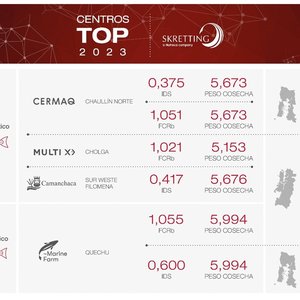Rabobank predicts strong growth in worldwide food and agriculture industry
Demand for the ‘4 Fs’ (i.e. food, feed, fibre and fuel) is set to continue to increase worldwide. The combined effects of this increased demand are placing pressure on agriculture to operate more efficiently and this is in turn leading to a higher level of investment in the industry. This development is enhanced by the fact that transportation networks around the world are being improved and countries with extensive natural resources that were previously inaccessible are now accessible. This will further boost investment in agriculture and increase the value of inputs, particularly in South America, Eastern Europe and Southeast Asia. Rabobank puts forward the above outlook in a new Food and Agri report entitled ‘The Boom Beyond Commodities’.
Despite recent shocks to the global economy caused by the credit crisis and soaring food and energy prices, companies operating in the food production and agricultural sectors are expected to achieve extremely strong growth in the years ahead, particularly in Asia. Substantial growth opportunities will arise in numerous sectors such as animal proteins and dairy, food processing, energy crops and commodities.
Considerable prospects for growth will continue to emerge. Players in a number of agricultural sectors will benefit from these opportunities, particularly in the up- and mid-stream segments of the value chain, including animal proteins and dairy, food processing, energy crops and commodities, and agri-inputs and agri equipment.
“As income growth drives demand for more protein foods, a multiplier effect for commodities and commodity inputs will support prices,” said Food & Agribusiness Research and Advisory (FAR) Brady Sidwell, who authored the report. “Expanding urban populations which prefer convenience and variety will bring growth to food processing and food retail — which will again boost demand for commodities and inputs and thus growth for players in these businesses.”
The Asian region clearly has the greatest potential for further expansion. Despite the short-term threats to growth ensuing from increasing inflation and a slowing world economy, growth in income, population and urbanisation will lead to strong fundamental demand. This will create new opportunities that will change the way agriculture is seen as an investment and valued as an asset. Commodity prices are expected to ease in the years ahead. Companies that are well positioned to respond to growth and changes in lifestyle, which will be most pronounced in developing countries, will be able to achieve strong success.
There will be a high level of rural-urban migration over the next ten years, particularly in China and India. The forecast is that every day around 50,000 people will move to the cities where the demand for food and energy is even higher than in the countryside.
Industries affiliated with biofuel will also require increasing volumes of crops. They will consequently also be a key driving force behind the growing demand for commodities, inputs and natural resources.







